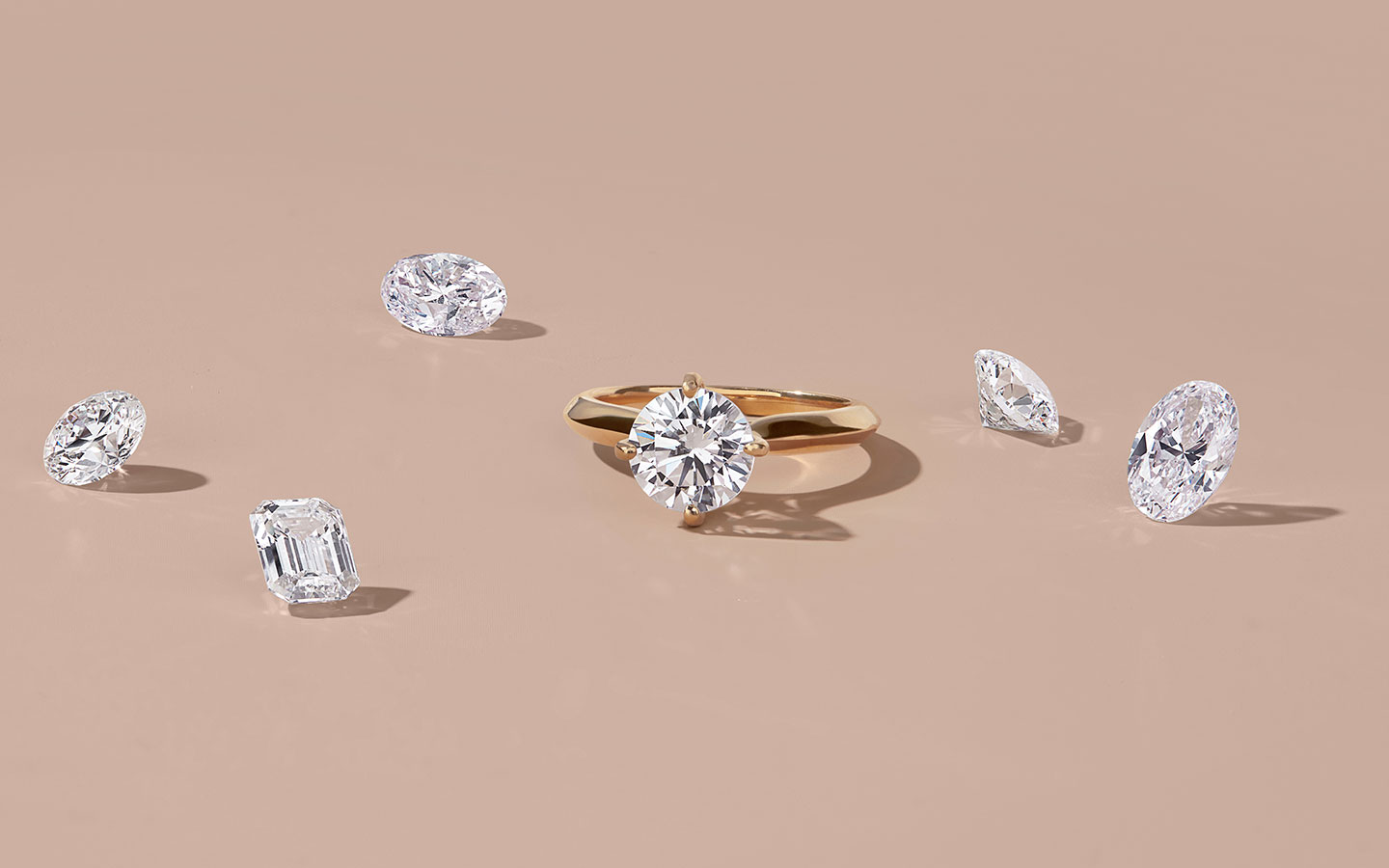What are Diamond Simulants?
Diamond simulants are materials that duplicate the appearance of natural diamonds. While they may appear to be similar to the untrained eye, they are chemically and physically distinct from real diamonds. Understanding these distinctions is crucial for anyone looking to purchase diamonds that accommodates their spending plan without settling for less on esthetics.
Understanding the Distinction Among Diamonds and Simulants
Natural diamonds are shaped profound within the Earth’s frame more than large number of years, made out of unadulterated carbon atoms arranged in a crystalline plan. They are valued for their hardness, brilliance, and rarity. Then again, diamond simulants are made from various materials and have varying degrees of hardness, brilliance, and optical properties.
Properties of Natural Diamonds
Natural diamonds are eminent for their exceptional hardness, scoring 10 on the Mohs scale, which makes them profoundly resistant to scratching. Their brilliance is unmatched because of their ability to mirror and refract light in original ways diamond simulants read, resulting in the characteristic sparkle that diamonds are known for.
Properties of Diamond Simulants
Diamond simulants can be made from a variety of materials like cubic zirconia (CZ), moissanite, white sapphire, and white topaz. Each simulant has own arrangement of properties determine its appearance and durability. For instance, cubic zirconia is optically flawless and inexpensive, while moissanite displays a higher brilliance than most natural diamonds.
Importance of Identifying Diamond Simulants
Knowing how to distinguish between natural diamonds and simulants is essential because of various factors. It guarantees that you are making an informed purchase, forestalls misrepresentation in the adornments market, and assists you with appreciating the exceptional qualities of each kind of gemstone.
Cubic Zirconia (CZ)
Cubic zirconia is one of the most popular diamond simulants because of its affordability and close visual resemblance to diamonds. It is optically flawless and can be sliced to duplicate the sparkle of a diamond successfully.
Moissanite
Moissanite is another generally seen simulant known for its brilliance and fire, which alludes to its ability to scatter light into spectral varieties. It is more durable than cubic zirconia and is often picked as an alternative to diamonds for engagement rings.
White Sapphire
White sapphire is a natural gemstone that intently is by all accounts diamonds in appearance yet lacks the same degree of brilliance and hardness. It is a popular decision for those seeking a more understated look.
White Topaz
White topaz is an affordable simulant that can appear to be diamonds when cut and cleaned. It is less brilliant than cubic zirconia or moissanite yet offers a spending plan cordial choice for gems.
Visual Inspection
A trained eye can often see contrasts in brilliance and optical properties between natural diamonds and simulants. Search for contrasts in how light reflects and refracts within the stone.
Hardness Test
Since natural diamonds are the hardest mineral known, they will scratch materials that diamond simulants cannot. Conducting a hardness test can assist with determining in case a stone is probably going to be a diamond or a simulant.
Thermal Conductivity Test
Diamonds have high thermal conductivity, meaning they scatter heat rapidly. Tools like a thermal conductivity test can assist with distinguishing diamonds from simulants based on how they lead heat.
UV Light Test
Some diamond simulants show fluorescence under ultraviolet (UV) light, which natural diamonds may or may not display. This test can give pieces of information about the jewel’s character.
Affordability
One of the main advantages of diamond simulants is their affordability. They allow customers to partake in the energy of a diamond without the unnecessary cost tag associated with natural stones.
Variety and Availability
Simulants arrive in a great many tones and cuts, offering more variety than natural diamonds. They are also more readily available, making it easier to find the ideal piece of diamonds.
Ethical Considerations
Not at all like natural diamonds, which may accompany ethical worries regarding mining practices, diamond simulants are typically created in controlled laboratory settings. This makes them a more ethical decision for purchasers worried about sustainability and human open doors issues.
Durability and Future
Simulants like cubic zirconia and white topaz are softer than natural diamonds and may scratch or become shady for quite a while with regular wear. Moissanite, while durable, can in any case encounter wear and tear.
Brilliance and Sparkle
While some simulants like moissanite can rival the brilliance of natural diamonds, others may lack the same fire and sparkle that diamonds are known for. This distinction in optical properties may be noticeable to certain individuals.
Normal Reasons for Diamond Simulants
Diamond simulants are utilized in a variety of gems pieces, including engagement rings, earrings, necklaces, and bracelets. Their affordability and visual appeal make them suitable for both everyday wear and special occasions.
Lab grown diamonds are real diamonds created in a controlled environment that mimics the natural conditions under which diamonds form in the Earth’s mantle. These diamonds are chemically, physically, and optically identical to natural diamonds, meaning they possess the same brilliance and hardness. The main difference lies in their origin:
Setting a Spending plan
Pick a tight spending plan that suits your financial situation and investigate simulants within that cost range. Recall that affordability is one of the main advantages of choosing simulants over natural diamonds.
Conclusion
In conclusion, diamond simulants give a compelling alternative to natural diamonds for customers seeking beauty, affordability, and ethical considerations. Understanding the distinctions among simulants and diamonds enables buyers to make informed choices while purchasing gems. Whether you pick cubic zirconia, moissanite, white sapphire, or white topaz, each simulant offers its own special charm and appeal. By following the tips outlined in this article, you can definitively pick the ideal simulant piece that suits your style and spending plan.

 Facing a DWI in Webster? Here’s What You Should Do
Facing a DWI in Webster? Here’s What You Should Do  The Rise of Lab Grown Diamonds CVD: Revolutionizing the Jewelry Industry
The Rise of Lab Grown Diamonds CVD: Revolutionizing the Jewelry Industry  Should I Get a Gold Ring? A Complete Guide to Choosing the Perfect Gold Jewelry
Should I Get a Gold Ring? A Complete Guide to Choosing the Perfect Gold Jewelry  Novita Secret Platinum Formula: The Fate of Lab-Grown Diamonds
Novita Secret Platinum Formula: The Fate of Lab-Grown Diamonds  Choosing Between IGI and GIA: A Comprehensive Guide
Choosing Between IGI and GIA: A Comprehensive Guide  Proposal Tips and Mistakes to Avoid for a Successful Engagement
Proposal Tips and Mistakes to Avoid for a Successful Engagement  Diamond Bracelet: A Sparkling Symbol of Elegance and Luxury
Diamond Bracelet: A Sparkling Symbol of Elegance and Luxury